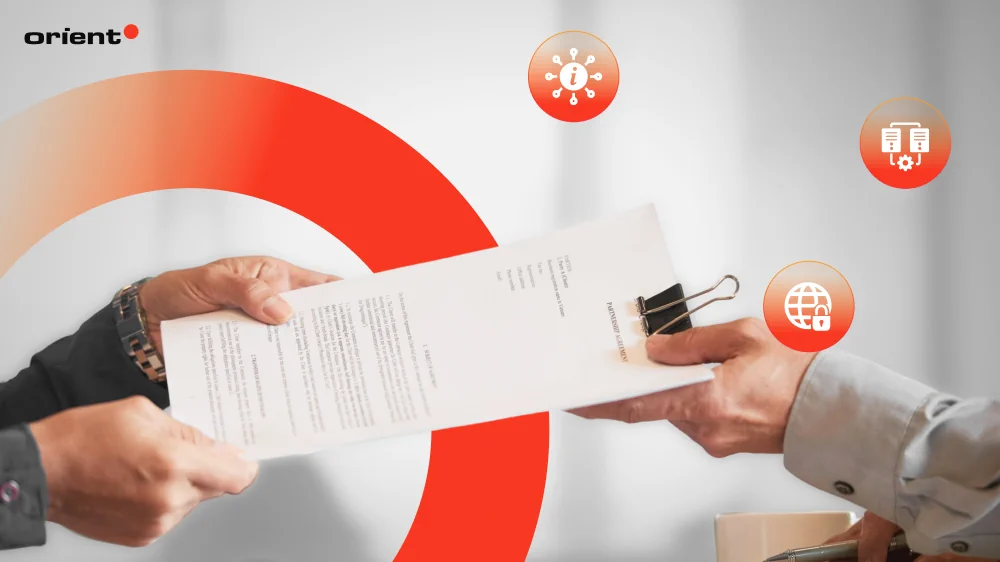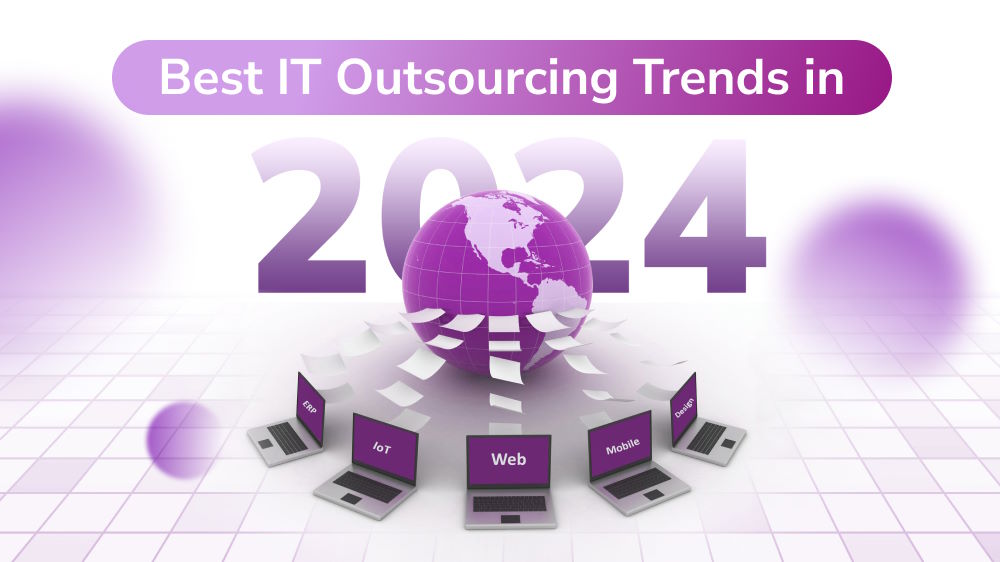
Do Not Sign a Software Development Contract Until You Know What’s Beneath
Whether you’re outsourcing for the first time or refining your vendor strategy, this article will walk you through the core types of software development contracts and the essential elements they should include. With this knowledge in hand, you'll be better equipped to negotiate terms that protect your rights and benefits as well as promote long-term collaboration.

Content Map
More chaptersToo often, business owners rush into outsourcing partnerships with unclear expectations, only to face costly missteps or legal disputes. A software development contract is not just another item to tick off the checklist. Indeed, committing to a legal agreement may be the final formality before development begins, but truly understanding the fundamentals of what you are signing is where your project’s success really starts.
We will walk you through all the essentials of a legally binding agreement when you use software development services. This guide will provide what you need to look out for in a contract so that you when it’s time to sign, you’re not just ready, you’re confidently ready.
Key Takeaways:
Understanding a software development contract is critical to avoiding costly mistakes. It defines how the partnership operates and protects both parties throughout the project.
- What a Software Development Contract Is: A contract is a legally binding agreement outlining obligations, deliverables, and expectations between the client and the service provider. It serves as a reference point throughout the engagement.
- What to Include in the Contract: A well-structured agreement should clearly define scope, payments, timelines, change procedures, IP ownership, testing standards, confidentiality, termination clauses, and dispute resolution.
- Main Types of Contracts: Software development contracts come in several forms, including Fixed-Price, Time-and-Materials, Dedicated Team, Capped T&M, Milestone-Based, Incentive-Based, Retainer, and Cost-Plus. Each has unique advantages based on project goals and complexity.
What Is a Software Development Agreement?
In the simplest terms, a software development contract refers to a legal agreement between the service user (client) and the service provider/contractor. Also known as a “Service Agreement” or “Statement of Work (SOW) Contract”, it sets the ground rules for mutual obligations, liabilities, and expectations in a partnership over a project. Such a project-specific agreement outlines detailed terms and conditions for a particular development process or job. For example, building a mobile app, creating a SaaS platform, or adding new features to an existing system.
In addition to spelling out the legalities, a well-structured contract transforms vague verbal promises into enforceable commitments and ensures that both sides are on the same page from the outset. It sets the tone for how mutual expectations are managed, how problems are resolved, and how value is delivered throughout the partnership. The involved parties have a shared reference point when questions, challenges, or issues arise during the project lifecycle.

Here’s a comprehensive outline of what a decent software development contract template should include:
- Parties Involved: Legal names and contact information of all parties joining the agreement.
- Scope of Work (Statement of Work/SOW): Detailed description of the scope, including features, functionalities, technologies, platforms, milestones, deliverables, and deadlines.
- Payment Terms: Total project cost, hourly rates or fixed fees, payment schedule (e.g., per milestone, monthly, final delivery), and reimbursable expenses.
- Timeline and Deadlines: Clear phases of the project with key delivery dates and final completion timelines.
- Change Management: Procedures for submitting and approving changes, and how those changes impact cost and schedule.
- Intellectual Property Rights: Ownership terms for code, software, designs, and other deliverables, whether transferred to the client or retained/licensed by the developer.
- Confidentiality & Non-Disclosure: Clauses protecting sensitive information, trade secrets, and proprietary data.
- Warranties and Support: Software warranty coverage (e.g., functionality guarantees for a set period), along with post-launch support, maintenance services, and bug fixes.
- Acceptance Testing Criteria: How deliverables will be tested, reviewed, and approved, including definitions of successful completion.
- Termination: Conditions for ending the contract, and post-termination procedures like final payments, work handover, or data disposal.
- Liability and Indemnification: Limits of liability, who bears responsibility for legal or financial damages, and indemnity terms.
- Dispute Resolution: Methods for resolving conflicts, including mediation, arbitration, jurisdiction, and governing law.
- Miscellaneous Provisions: Additional clauses such as force majeure, contract amendments, assignment rights, and formal notice requirements.
Primary Types of Software Development Contracts
Software development agreements define how the outsourcing relationships unfold, and they can take various forms, depending on the project’s goals, cost structure, flexibility needs, and duration. Understanding the differences between them will help you choose the outsourcing framework that best suits your requirements.

Fixed-Price Contracts
As its name implies, a fixed-price contract defines a total, non-negotiable fee for completing a software project. The client agrees to pay a predetermined amount for a clearly specified outcome. Both the scope of work and delivery timelines are established in detail before development begins, and any deviation typically requires a formal change request and additional service fees. Also, the software developer’s duties are well defined from the outset - to deliver the agreed-upon project within the specified budget and timeline.
For its nature, this contractual type is ideal only for projects with well-defined requirements, a clear timeline, and minimal anticipated changes. Fixed-cost agreements allow for budget certainty and minimize financial risk for the client.
Dedicated Development Team Contracts
Such contracts establish long-term partnerships in which the service company assembles a dedicated team of specialists, typically including developers, testers, project managers, UI/UX designers, and others who work exclusively on your project. While these professionals are employed and managed by the vendor, they function as a fully integrated extension of your internal full-time team.
Unlike fixed-budget or short-term engagements, this contract type is designed for businesses seeking continuity, full-time commitment, and deeper involvement from their outsourced team. With direct access to the same developers over time, you gain the advantage of domain knowledge, consistency, and smoother collaboration. These traits are critical for complex, evolving, or mission-critical software initiatives.

One of the primary benefits of this approach is the flexibility it offers. You can adjust your team capacity based on project demands, introduce new priorities midstream, or shift resources across parallel initiatives without rewriting the contract every time. Additionally, since the team is dedicated solely to your project, there’s no competition for attention or delivery delays due to conflicting obligations.
However, this level of dedication and customization often comes at a higher cost compared to project-based contracts. It is an investment not only in delivery but in stability and strategic alignment. Therefore, dedicated team contracts are best suited for companies that view software development as a core, continuous function rather than a one-time task.
Time-and-Materials Contracts
In a time-and-material contract, clients are billed based on actual hours worked and the third-party materials used throughout the project. This model provides full transparency into how time and budget are being allocated at each stage of the software development life cycle. Its greatest strength lies in flexibility.
You can freely adjust scope, priorities, and requirements as the project evolves, shift timelines, reassign priorities, or even pause development if needed. This contractual type enables transparency and dynamic resource management, making it a strong fit for long-term, agile-oriented projects with room to evolve.
Capped Time-and-Materials Contracts
This hybrid format combines the adaptability of T&M billing with the financial discipline of a fixed project budget. The agreement includes a maximum spending threshold, preventing costs from spiraling out of control while still offering flexibility in execution.

Capped T&M contracts are an excellent fit for time-sensitive projects where early delivery can create competitive or operational advantages. They allow development to start early while still protecting financial interests. That said, there’s a potential risk that the pursuit of bonuses could lead to quality trade-offs, so it’s important to pair this contract with strong quality assurance processes and milestone checks. Moreover, setting the cap too conservatively can interrupt progress if the project naturally requires more time or effort than initially anticipated.
Milestone-Based Contracts
A milestone-based contract breaks the specific project details into phases, each tied to specific deliverables and payment triggers. The client releases payments as the development agency completes and delivers agreed-upon milestones, such as prototypes, feature modules, or testing checkpoints.
This format fosters a results-driven approach and keeps both sides accountable throughout the engagement. It is especially effective for medium-to-large projects that benefit from incremental progress reviews. Still, the success of this model depends heavily on how clearly each milestone is defined. Vague or ambiguous goals can lead to disputes over acceptance and delivery status.
Incentive-Based Contracts
In an incentive-based contract, the vendor is rewarded for surpassing defined performance benchmarks. These incentives might be tied to early completion, fewer defects, reduced costs, or exceptional quality metrics. Often layered onto other contract types, this model encourages efficiency and high standards.
While it can boost motivation and delivery speed, incentive-based arrangements require precise definitions of success. Ambiguity in performance criteria can cause friction or mismatched expectations. When executed correctly, however, this format aligns the vendor’s efforts with the client’s strategic goals.

Retainer Contracts
A retainer agreement secures the availability of development resources over an extended period, typically on a monthly or quarterly basis. Clients pay a recurring fee to retain a dedicated team or individual, whether or not all allocated hours are used.
This model offers continuity and convenience for clients with ongoing development, maintenance, or support needs. It ensures resource availability without the need for constant contract renegotiation. However, to avoid inefficiencies, it’s essential to clearly define how unused hours are managed and what services fall within the retainer’s scope.
Cost-Plus Contracts
A cost-plus contract reimburses the vendor for all legitimate project expenses, such as labor, infrastructure, and materials, while also adding a fixed fee or percentage as profit. This model prioritizes transparency and flexibility, allowing the project scope to evolve without constant renegotiation.
Cost-plus arrangements are frequently used in highly customized or large-scale initiatives, especially where exact requirements cannot be established early. On the flip side, the client assumes more financial exposure and must closely monitor spending. Without proper controls or budget caps, costs can escalate quickly. This type of contract works best when trust is well-established and robust reporting mechanisms are in place.
Look Out for These Key Elements in a Software Development Contract
Beyond choosing the right software development contract type, a well-drafted agreement should include the core components that define how the collaboration will unfold. Striking a balance between clarity and flexibility, these contractual elements are essential to mitigate risks, align expectations, and protect the benefits of both parties.

Project Scope & Service Description
The foundation of any contract is a clear understanding of what the outsourcing partner is expected to deliver. This section should outline the project scope in detail - what will be built, which technologies and platforms will be used, the tools and processes involved, and any agreed-upon services such as testing, deployment, or ongoing support. Timelines, resource commitments, and maintenance expectations should also be included. The more explicit this section is, the less room there is for confusion later.
Payment Terms & Conditions
Clearly defined payment terms are crucial for preventing disputes and partially guaranteeing commercial success. This section should specify the pricing model (fixed, hourly, milestone-based, etc.), the payment schedule, applicable rates, accepted currencies, and the method of payment. If you’re working with a partner in a different country (E.g., Vietnam), consider any cross-border regulations or taxes that might apply. Transparency here builds trust and ensures smoother collaboration.
Intellectual Property Rights & Project Ownership
Ownership of deliverables is a critical issue in any software development contract. The agreement should specify who will retain rights to the software’s code, documentation, designs, and other outputs once the project is completed. It should also address how modifications, updates, or extensions will be handled, and whether any reused or open-source components are included. Ensuring that IP rights are clearly assigned safeguards your investment and avoids future legal complications.

Acceptance Testing & Quality Assurance
To make certain that the final product meets your expectations, the contract should outline how deliverables will be tested, reviewed, and finalized. This includes the quality standards to be met, the testing tools and processes to be used, and the roles both parties play in the QA phase. It should also define when acceptance testing will begin, how long it will take, and how bugs or defects will be handled both before and after project delivery. Setting expectations here is important to ensure a smooth and satisfactory handoff.
Data Security & Confidentiality Provisions
In any software development project, you deal with sensitive business data, user information, or proprietary technology, so confidentiality and data protection clauses are essential. The contract should outline what information is stipulated to be confidential and define how it must be handled, stored, and accessed. Also, the contract should lay out the responsibilities of each party in the event of a data breach, and any relevant compliance obligations such as GDPR or HIPAA.
Termination Clauses & Dispute Resolution
Even with the best intentions, projects don’t always go as planned. A well-written agreement should include termination provisions in case of unforeseen circumstances or dissatisfaction. These clauses define under what conditions either party can exit the contract and what steps must be taken to do so. Final payments, handover of completed project work, or destruction of sensitive data must also be covered. Additionally, the contract should include a clear dispute resolution process to ensure you can amicably resolve issues and conflicts rather than resorting to legal action.
Final Notes
From a client’s standpoint, a well-crafted software development contract isn’t just about legal protection but a practical safeguard against delays, miscommunication, and failure. It establishes accountability, ensures ownership, and fosters transparency at every stage of development. Most importantly, it provides mutual security and shared understanding, which are two key pillars of a productive outsourcing relationship.
Both parties should feel confident in the terms of the agreement and remain open to revisiting them when necessary. They share reasonable efforts to maintain the relationship. As long as changes are agreed upon mutually and documented properly, a contract can and should evolve alongside the project.
If you’re seeking professional guidance to draft or review a software development agreement or a capable partner to bring your software vision to life, reach out to Orient Software. We’re here to help you build smarter, safer, and more successful partnerships.






